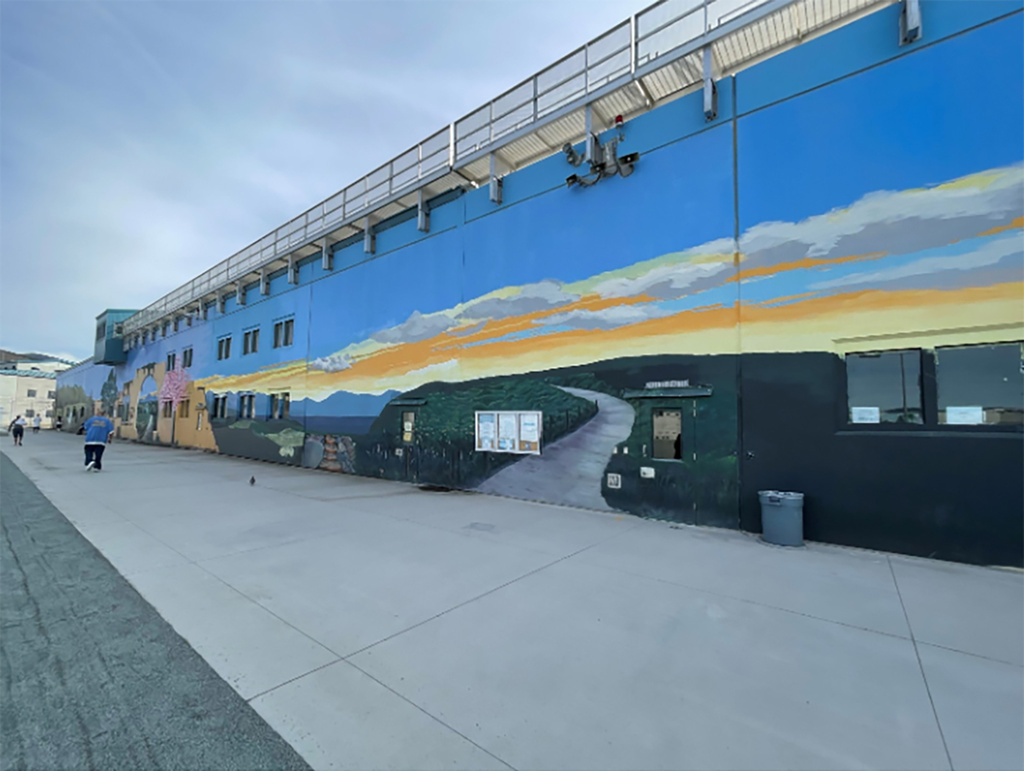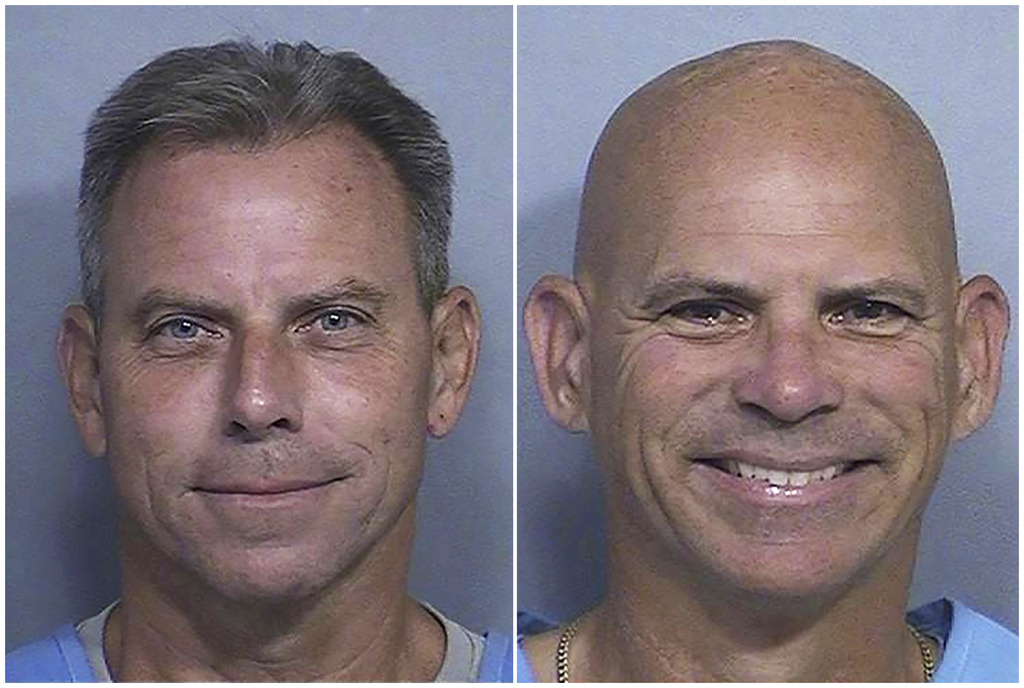Menendez Brothers’ Green Space Plan, Inspired by Norway Prison \ Newslooks \ Washington DC \ Mary Sidiqi \ Evening Edition \ Nearly 30 years into their life sentences, Erik and Lyle Menendez have undertaken a green space initiative at their California prison, inspired by Norway’s rehabilitative approach to incarceration. Their project aims to create a normalized, park-like environment, focusing on humane surroundings to aid in prisoner rehabilitation. California officials are hopeful this model will support reintegration and reduce recidivism.

Menendez Brothers Transform Prison with Norwegian-Inspired Green Space Project: Key Points
- The Menendez brothers launched a beautification project in their California prison, influenced by Norway’s humane prison model.
- Norway’s incarceration system prioritizes rehabilitation through normalized environments, yielding some of the world’s lowest recidivism rates.
- Norway’s open prison concept and right-retention policy, including access to education and libraries, contrasts with U.S. incarceration practices.
- California has begun to incorporate Nordic-inspired programs, such as Pennsylvania’s “Little Scandinavia” project, to improve inmate outcomes.
- The Menendez brothers’ initiative reflects a shift toward integrating supportive, nature-centered rehabilitation in U.S. prisons.
Deep Look
Nearly three decades after being sentenced to life without parole for the killing of their parents, Erik and Lyle Menendez are leading a project that’s transforming their California prison environment. Inspired by Norway’s rehabilitative prison model, their initiative at the Richard J. Donovan Correctional Facility is intended to create a green, nature-filled space that offers a more humane atmosphere. The brothers and prison staff believe this approach could lead to better mental health for inmates, enhanced staff wellbeing, and, ultimately, a foundation for successful reintegration into society.
The Menendez brothers’ vision aligns with Norway’s emphasis on rehabilitation through normalized and humane prison conditions. In Norway, a small country stretching along northern Europe’s coast, humane prison practices are designed to help inmates successfully reenter society, even those who have committed serious offenses. “Norway operates on the principle that individuals in prison should be treated decently by well-trained staff and should retain basic rights,” explains Kristian Mjåland, a sociology professor at the University of Agder. Norway’s incarceration rate, among the lowest globally, is roughly one-tenth that of the United States, with only about 3,000 people in prison. In contrast to the U.S., Norwegian prisons provide incarcerated individuals with access to libraries, healthcare, education, and even voting rights, delivered by the same service providers as in the general community.
Mjåland notes that Norway’s system, based on a “principle of normality,” views the deprivation of liberty as punishment enough, without further punitive conditions. This compassionate philosophy is reflected in Norway’s unique “open prisons,” including Bastoey Island, which operates as a green correctional campus surrounded by farms and fjords. Norway’s humane approach has significantly lowered its recidivism rate, which was only 16% in 2020—a stark contrast to the 66% recidivism rate in the U.S., as noted in a Department of Justice report.
The Menendez Brothers’ Green Space Project
The end goal is ambitious: transforming the prison yard from a concrete expanse into a landscape of greenery, murals, and meeting spaces. Plans include outdoor classrooms, group meeting spaces for rehabilitation sessions, and training areas for service dogs. According to the California Department of Corrections and Rehabilitation, the project’s design intends to “normalize the environment inside the prison to reflect the living environment outside,” aligning with principles of the new “California Model” of rehabilitation, according to Deputy Press Secretary Pedro Calderón Michel.
California’s Shift toward Rehabilitation
The Menendez brothers’ project comes as part of a larger trend in the United States that seeks to embrace Scandinavian-inspired correctional practices. California, with its recent introduction of the “California Model,” is adopting these principles to create safer communities by emphasizing rehabilitation, education, and reentry support. The California program shares similarities with Pennsylvania’s “Little Scandinavia” project launched at a Chester prison in 2022, aimed at creating more humane and productive correctional environments that foster personal growth among inmates.
Attorney Mark Geragos, representing the Menendez brothers, said Lyle Menendez was first exposed to Norway’s prison model in his studies on urban planning and recidivism as part of a master’s program. Geragos emphasized that for his client, the introduction of green spaces was not just about beautification but an intentional step toward making reintegration into society easier for prisoners. “When you’re there in a gray space that is not very welcoming, it’s disorienting to some degree,” Geragos explained. The transformed prison environment, with its welcoming, natural elements, can facilitate acclimation and preparation for life post-incarceration.
Dominique Moran, a professor specializing in carceral geography at the University of Birmingham in the U.K., confirmed that introducing green spaces has measurable positive effects on both inmates and staff. “Green spaces reduce self-harm and violence, and also reduce staff sickness,” noted Moran, who has studied carceral spaces worldwide. “The deprivation of liberty is itself the punishment. There should not be further punishment through the nature of the environment in which people are held,” she added.
Menendez Brothers’ Prospects for Parole
The Menendez brothers’ story gained renewed attention recently when the Los Angeles County district attorney recommended their sentences be reconsidered. Their lawyer, along with the district attorney, presented evidence that the brothers endured significant abuse from their father, which may be grounds for reducing their sentences. Both advocates cited the Menendez brothers’ model behavior in prison and their commitment to rehabilitation through projects like Green Space.
If the court accepts this recommendation, the Menendez brothers could become eligible for parole. However, even if the judge decides in their favor, the final decision will still require approval from a parole board and, ultimately, the California governor. The brothers’ supporters argue that they have already served enough time and are ideal candidates for rehabilitation and reintegration given their behavior and dedication to improvement projects within the prison.
A Shift Toward Humane Correctional Environments
The Menendez brothers’ beautification project at Richard J. Donovan Correctional Facility exemplifies a growing recognition in the U.S. of the benefits that come from humanizing prison environments. The incorporation of green spaces and the adoption of practices from Norway’s model represent a potential paradigm shift toward a rehabilitation-focused correctional system that prioritizes well-being. By integrating elements that mimic life beyond prison walls, the California Model aims to foster an environment where inmates can reconnect with humanity and prepare for a constructive life upon release.
Both the Norwegian and Menendez-led approaches share a commitment to promoting mental and emotional health through contact with nature and community-engaging activities. By advocating for these elements in U.S. prisons, proponents hope to reduce recidivism and reshape the American prison system into one that emphasizes opportunity and growth, not simply punishment.







